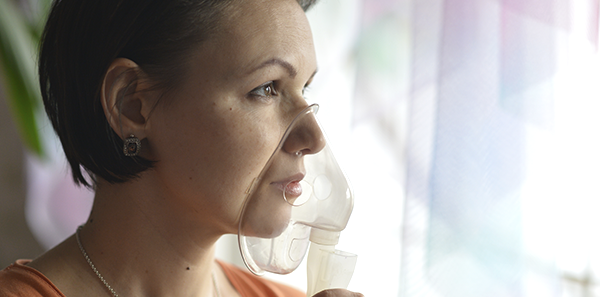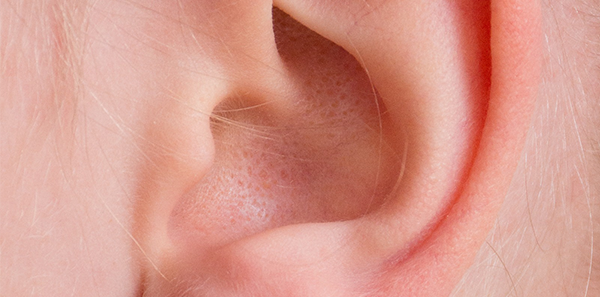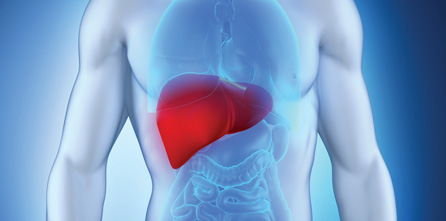
Chronic respiratory failure
Chronic respiratory failure (CRF) consists of a persistent insufficient blood oxygen (hypoxemia) (Pa O2 < 60 mmHg), with or without raised blood carbon dioxide (hypercapnia) (Pa CO2>45 mmHg).
Inadequate gas exchange by the respiratory system initially causes hypoxemia without hypercapnia (low levels of blood oxygen).
Most lung diseases lead to impaired gas exchange whether they affect the parenchyma (pneumonia), the alveolar wall and interstitium (emphysema and fibrosis) or the bronchi (chronic bronchitis).
In the advanced stages, chronic hypoxemia can be accompanied by hypercapnia.
Gases are moved through the lung by pressure differences between the atmosphere and the alveoli. Coordination between the thoracic cage, the respiratory muscles and the central and peripheral nervous systems act as a ventilatory “pump” that generates pressure differences. Ventilatory pump failure leads to Chronic Respiratory Failure (CRF) in which, in addition to a degree of hypoxemia, is characterised by the presence of hypercapnia.
There are three groups of illnesses that affect the ventilatory pump:
1. Deformities of the thoracic cage. Kyphoscoliosis or alterations secondary to thoracic surgery (thoracoplasty).
2. Neuromuscular diseases. Poliomyelitis. Amyotrophic lateral sclerosis (ALS).
3. Congenital or acquired ventilation control disorders. Ventilation syndrome associated with obesity.
A CRF diagnosis is insensitive and non-specific, given that it is often more than an exacerbation of the underlying disease. Cyanosis (bluish discolouration of skin and mucous membranes) is a sign of CRF secondary to primary alterations in gas exchange.
Obstructive Sleep Apnoea Syndrome (OSAS)
Obstructive Sleep Apnoea Syndrome (OSAS) is one of the most common sleep disorders. It is characterised by a periodic reduction (hypopnea ) or cessation (apnea) of breathing due to narrowing of the upper airway during sleep. These periodic changes interfere with rest patterns because the patient wakes up numerous times during the night, although they might not be aware of this. In most cases, this is accompanied by snoring.
OSAS is associated with increased morbidity from ischemic heart disease (heart attacks, angina), traffic accidents and strokes.
Its most important symptom is daytime sleepiness. Traffic accidents are commonly caused by patients falling asleep at the wheel. Also, when patients ‘stop’ breathing at night, their partners have to wake them up. Other common symptoms are morning headaches which get better during the day, loss of libido, impotence and personality and cognitive disorders.
A sleep study or polysomnography is used to diagnose OSA. First-line treatment is weight loss, especially in mild to moderate cases. The treatment of choice for serious cases is the application of nasal continuous positive airway pressure (nasal CPAP). The use of CPAP should be considered as indefinite measures so checking patient compliance is essential.
Suspected lung cancer
Lung cancer is more frequent among men. Bronchogenic carcinoma accounts for 90% of cases. Squamous cell cancer is responsible for 30% of cases, followed by adenocarcinoma and small cell carcinoma. The most common form is large cell cancer.
A total of 50% of cases are metastatic when diagnosed and 20% are localised. The most significant ethiological factor is smoking. A person who smokes 20-25 cigarettes/day is 20 times more likely to develop lung cancer than a non-smoker.
The most common symptom of bronchial cancer is a cough, followed by phlegm, chest pain and hemoptysis (coughing up blood).
A total of 12% of lung cancers are diagnosed through extrathoracic metastases in the adrenals glands, central nervous system, liver, bone, etc.
In spite of the anti-smoking campaigns and lung cancer screening campaigns, it has not been possible to increase survival rates in comparison to the baseline. For the moment, the only way to prevent lung cancer is to reduce smoking in the population. It is important to ask your family doctor for preventive examinations and to have regular X-rays, particularly if you are a smoker and/or have any of the aforementioned signs and symptoms.
Dr. Juan Antonio Andreo Ramírez – ASSSA Medical Manager
The information published in this media neither substitutes nor complements in any way the direct supervision of a doctor, his diagnosis or the treatment that he may prescribe. It should also not be used for self-diagnosis.
The exclusive responsibility for the use of this service lies with the reader.
ASSSA advises you to always consult your doctor about any issue concerning your health.












